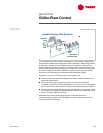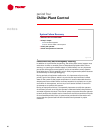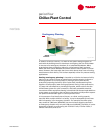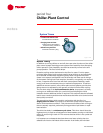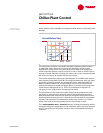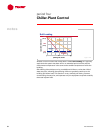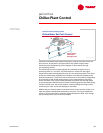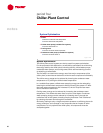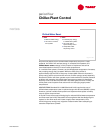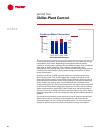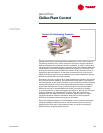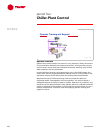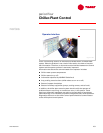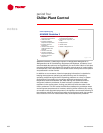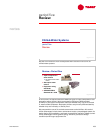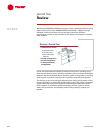
TRG-TRC016-EN 97
period four
Chiller-Plant Control
notes
As previously stated, as the chilled-water temperature set point is reset
upwards, the chiller will use less energy. In constant-flow systems, this
chilled-water reset strategy is fairly simple to implement and can be
controlled based on the drop in return-water temperature.
In a variable-flow system, however, as the chilled-water temperature increases,
the pumping energy also increases. While the COP of the chiller is
approximately 6.5, the COP of the pump is about 0.65. Often the increase in
pump energy will be more than the amount of chiller energy saved, especially
because the chiller will often operate at part-load conditions. Another potential
problem with resetting the chilled-water temperature upward is that space
humidity control can be compromised if the water gets too warm. Finally, the
chiller-plant control system must account for the changing supply-water
temperature.
ASHRAE/IESNA Standard 90.1–1999 (Section 6.3.4.3) requires the use of
chilled-water temperature reset in systems larger than 25 tons [88 kW]. It does,
however, exclude variable-flow systems and systems where space humidity
control will be compromised.
In Period Three, the concept of designing for reduced chilled-water temperature
and flow rates was briefly discussed. Some engineers feel that designing the
system for low flow rates and a lower supply-water temperature, thus
minimizing pump energy use, might be a better answer than attempting to
reset the temperature upward.
▲ Cons
◆ Increases pump energy
in variable-flow systems
◆ Can cause loss of
space humidity control
◆ Complicates chiller
sequencing control
Chilled Water Reset
▲ Pros
◆ Reduces chiller energy
◆ Can work in constant-
flow systems
Figure 105



